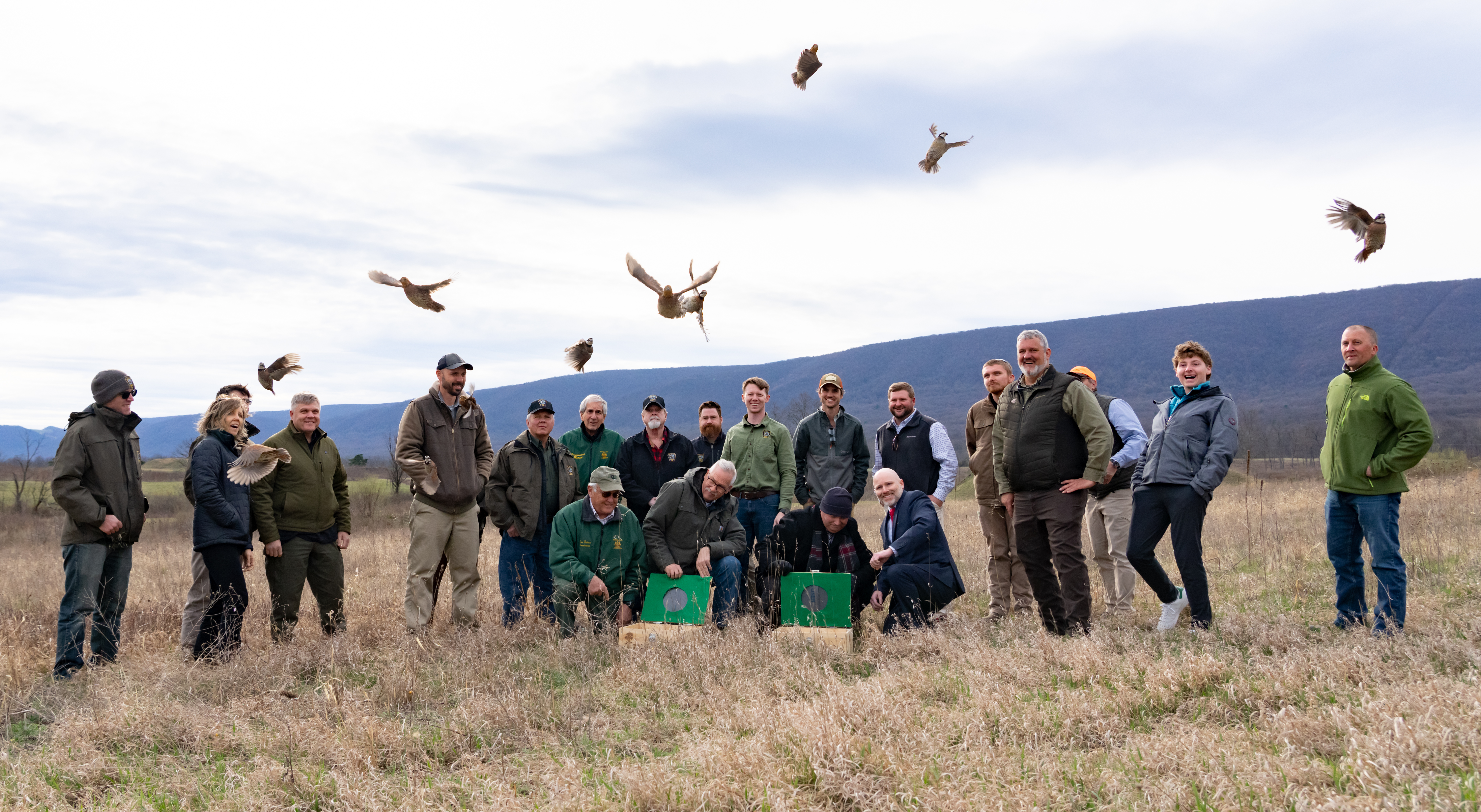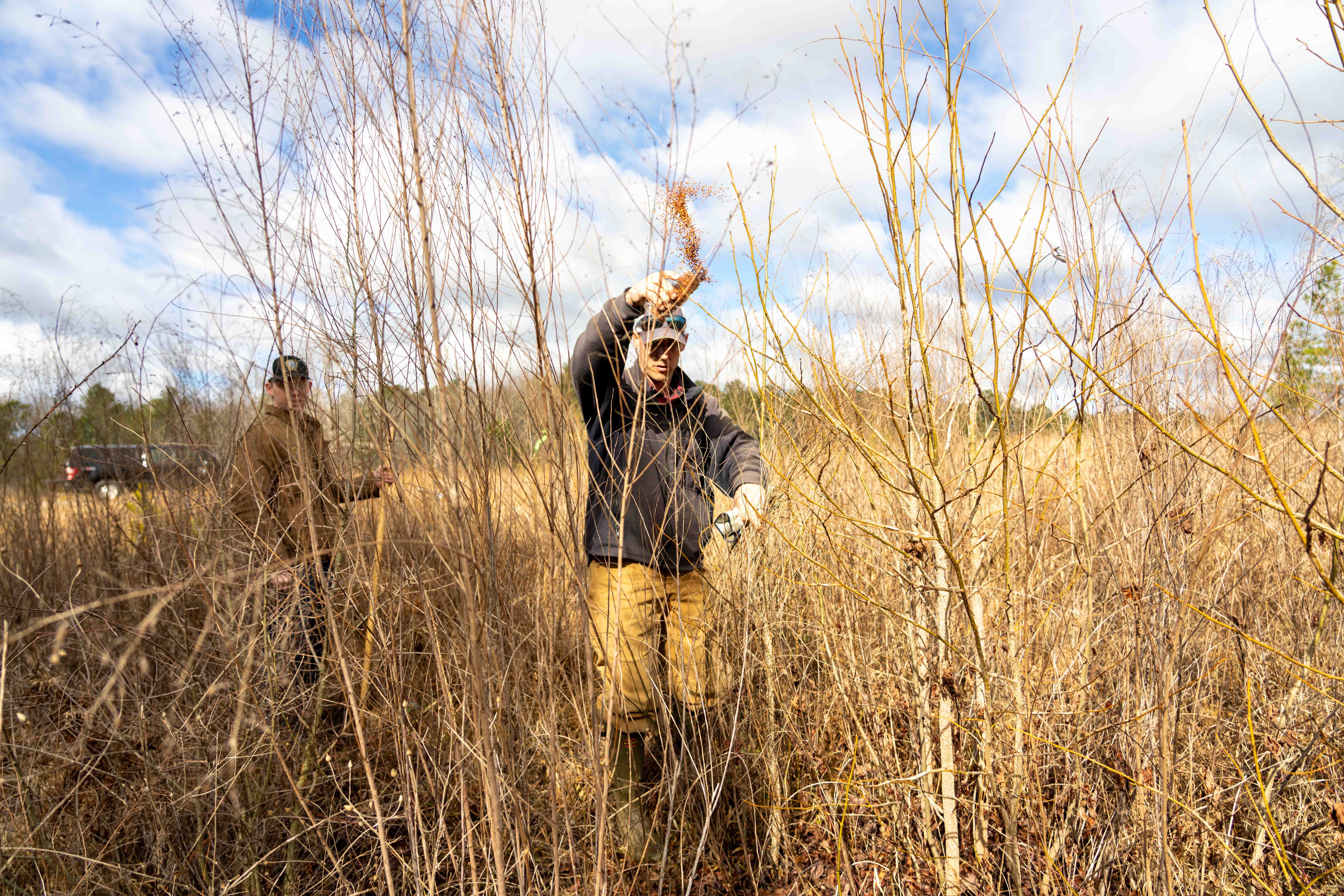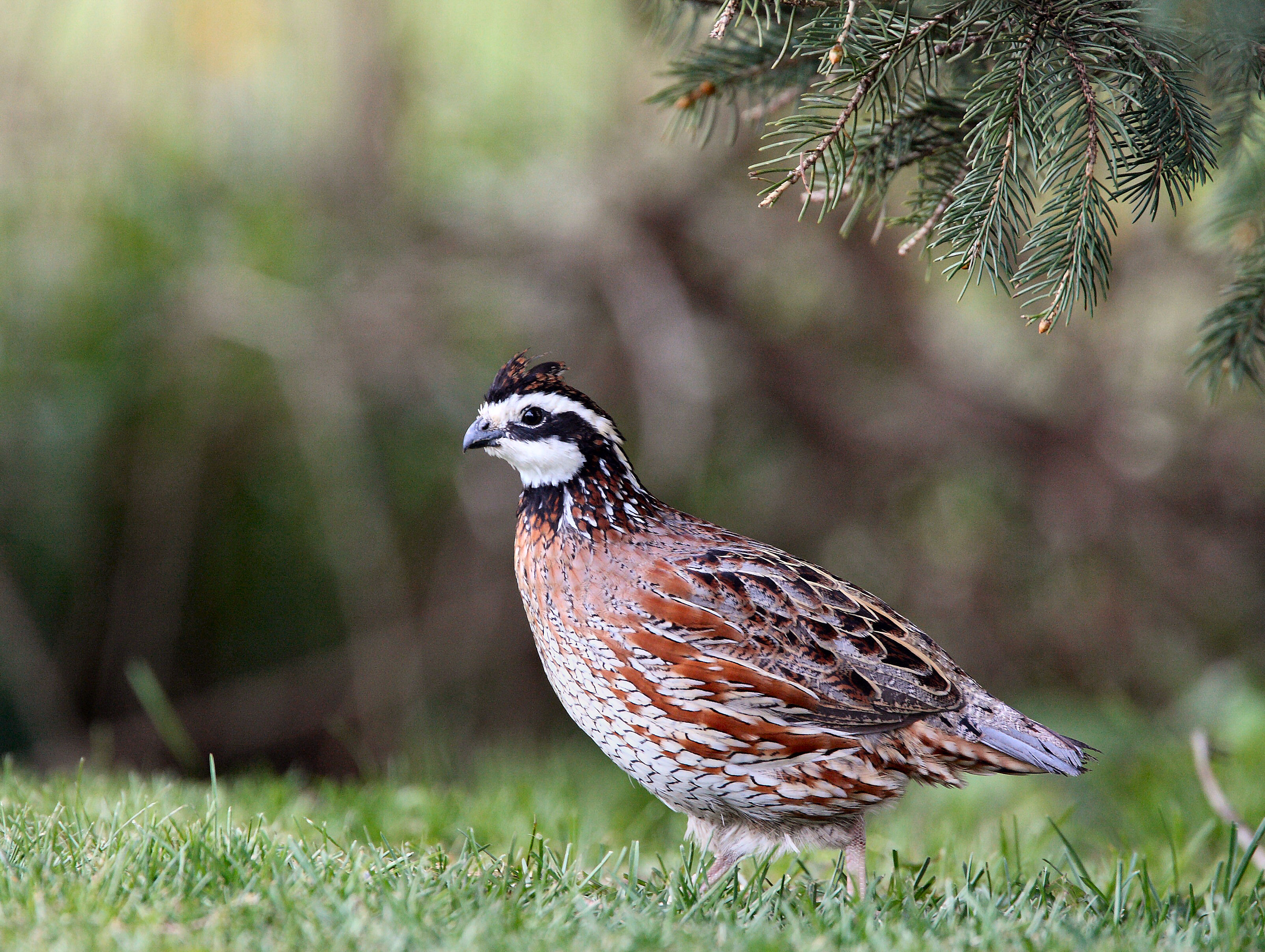They’re Back: Pennsylvania’s
Bobwhite Quail Reintroduction
 After decades of extirpation and years of intensive habitat work, the Pennsylvania Game Commission released bobwhite quail on the grounds of Letterkenny Army Depot in Franklin County in March. Game Bird Section Supervisor Andrew Ward answered some of the most common questions about this historic reintroduction.
After decades of extirpation and years of intensive habitat work, the Pennsylvania Game Commission released bobwhite quail on the grounds of Letterkenny Army Depot in Franklin County in March. Game Bird Section Supervisor Andrew Ward answered some of the most common questions about this historic reintroduction.
What happened to the bobwhite quail population in Pennsylvania?
AW: The bobwhite is a ground-dwelling game bird that’s native to Pennsylvania. They require early successional habitat with a mix of warm season clump and bunch grasses, forbs and legumes, woody protective cover, and enough bare ground to walk through the cover. This habitat type is referred to as old field habitat and is maintained through regular disturbance. Bobwhite once benefited from natural disturbances, fire, and primitive farming practices to maintain this old field habitat. Primitive farms were once plentiful in Pennsylvania with fields that had weeds, insects, and woody vegetation throughout and along field edges. This led to the height of bobwhite abundance and distribution in Pennsylvania in the 1820-60s. Bobwhite quail were likely present in every Pennsylvania county around the 1850s, but changing farming practices and lack of disturbance on naturally occurring grasslands led to habitat declines, which then led to declines in bobwhite populations. Those population declines continued until the bobwhite’s eventual extirpation in the late 1990s or early 2000s.
Why is the Pennsylvania Game Commission reintroducing bobwhite quail to the state?
AW: Management of Pennsylvania’s native wildlife species, like the northern bobwhite, falls under the Pennsylvania Game Commission’s mission to “manage and protect wildlife and their habitats while promoting hunting and trapping for current and future generations.” Bobwhite quail declined over time to the point of extirpation due to habitat loss and fragmentation and are not the only species facing declines due to loss of old field habitat. Addressing this issue is a large but achievable undertaking. Our action on this smaller scale informs further management that benefits many of Pennsylvania’s declining grassland and shrubland species.
How did the Game Commission bring bobwhite quail back to Pennsylvania?
AW: The reintroduction of an extirpated species is no small task. Many people in the Game Commission across several bureaus were involved over time to make it this far. Many outside partners also helped to provide the location for reintroduction, manage habitat, and source wild bobwhite quail for translocation. Letterkenny Army Depot provided the location for the reintroduction, manpower to manage habitat, and the passionate staff to maintain progress. Pheasants Forever and Quail Forever played a pivotal role in managing habitat on site. National Wild Turkey Federation secured a $100,000 grant to convert 210 acres of former agricultural leases into pollinator plots to benefit many species. The wild bobwhites sourced for this project came from three sites. We were able to connect with many of our out-of-state counterparts through the National Bobwhite and Grasslands Initiative. The first source of wild bobwhites for translocation came from Fort Barfoot through the Game Commission’s partnership with the installation and Virginia Department of Wildlife Resources. Our second source was Fort Knox. The third source was Tall Timbers, which brought bobwhites as well as their in-depth knowledge of bobwhite translocation. Now that bobwhites are back in Pennsylvania, our partners at the University of Delaware are conducting research on the reintroduced bobwhites and songbirds that may also benefit from habitat management at Letterkenny.

Are predators a risk to the bobwhite quail that were released? What is the Game Commission doing to prevent an issue?
AW: Predation is the No. 1 cause of mortality for bobwhite quail throughout their range. With an average annual survival of 23%, they regularly face predation and have evolved to overcome that survival rate with high reproductive output. The most important thing landowners and land managers can do to aid gamebirds in evading predation is to manage their habitat in a way to reduce predator density and increase protective cover.
Habitat at Letterkenny Army Depot has been managed to favor bobwhite and other old field species while reducing habitat for predators since 2017. For example, the available trees for birds of prey and meso-mammals to use was significantly reduced throughout the bobwhite quail focus area. Other methods included promoting interspersed bunches of protective cover. When ample non-linear bunches of protective cover are available, gamebirds have many options to hide and the area becomes more challenging for predators to search.
Scent station surveys have been implemented on the bobwhite quail focus area and a control area since 2022. This survey creates an index of predator abundance to indicate changes over time and differences between the focus area and control area. In both years of the survey, the managed site had a lower abundance of predators than the control area. This indicates our habitat management is having the desired effect. We start with habitat management but are also implementing short-term practices like predator removal during translocation years. The bobwhite is one of the few species that has documented support for the positive impact predator removal has on the population. Even in that context, predator removal should only be used in addition to intensive habitat management.

Will the bobwhite quail sourced from Florida acclimate to Pennsylvania winters?
AW: This is a question we hope to answer in the coming years! When possible, bobwhite translocation should use source sites that are similar to the recipient site. This is challenging in the northern part of bobwhites range due to low population densities at the northern latitudes. Pennsylvania is in the northern edge of bobwhite range. Bobwhites were sourced from two of the nearest sites as well as north Florida to increase the number of bobwhites for translocation. Translocations were timed so bobwhites will not have to weather Pennsylvania’s winter until after their first breeding season. They did not face a dramatic change in temperature upon release.
Will the Game Commission release bobwhite quail at other locations if the reintroduction is successful?
AW: The Game Commissions bobwhite quail management plan for 2021-2030 states a plan for expansion based on success at Letterkenny. Based on the success of this initial translocation, additional bobwhite focus areas may be identified. This first site would be the source of wild bobwhites for translocation to establish a population at a following site.
Will there be a huntable population of bobwhite quail in Pennsylvania?
AW: The Game Commission’s current bobwhite management plan lays out the path to establish a population of wild bobwhite within part of their historic range in Pennsylvania. It will take time for this population to become established. The bobwhite management plan sets goals to establish this population as well as a goal to expand this bobwhite population beyond the boundaries of Letterkenny Army Depot and into new sites. With success in the initial focus area, the Game Commission goal to expand would use this population to source further translocations within the state. So, Pennsylvanians shouldn’t expect a wild bobwhite hunting season soon.
 Andrew Ward
Andrew Ward
Andrew Ward is the Game Bird Section Supervisor in the Pennsylvania Game Commission’s Wildlife Management Bureau. He previously spent 3 years managing northern bobwhite, wild pheasant, and mourning dove programs. In that time, he worked with others within the agency and partner organizations to meet management objectives for these species. He has represented the Game Commission on three multistate technical committees, represented the northeast region of the country on the National Bobwhite and Grasslands Initiative steering committee, and worked with seven major partner organizations to manage and reintroduce bobwhite. In 2024, he coordinated the translocation of bobwhite from Florida, Kentucky, and Virginia to Letterkenny Army Depot to bring bobwhite back to Pennsylvania.